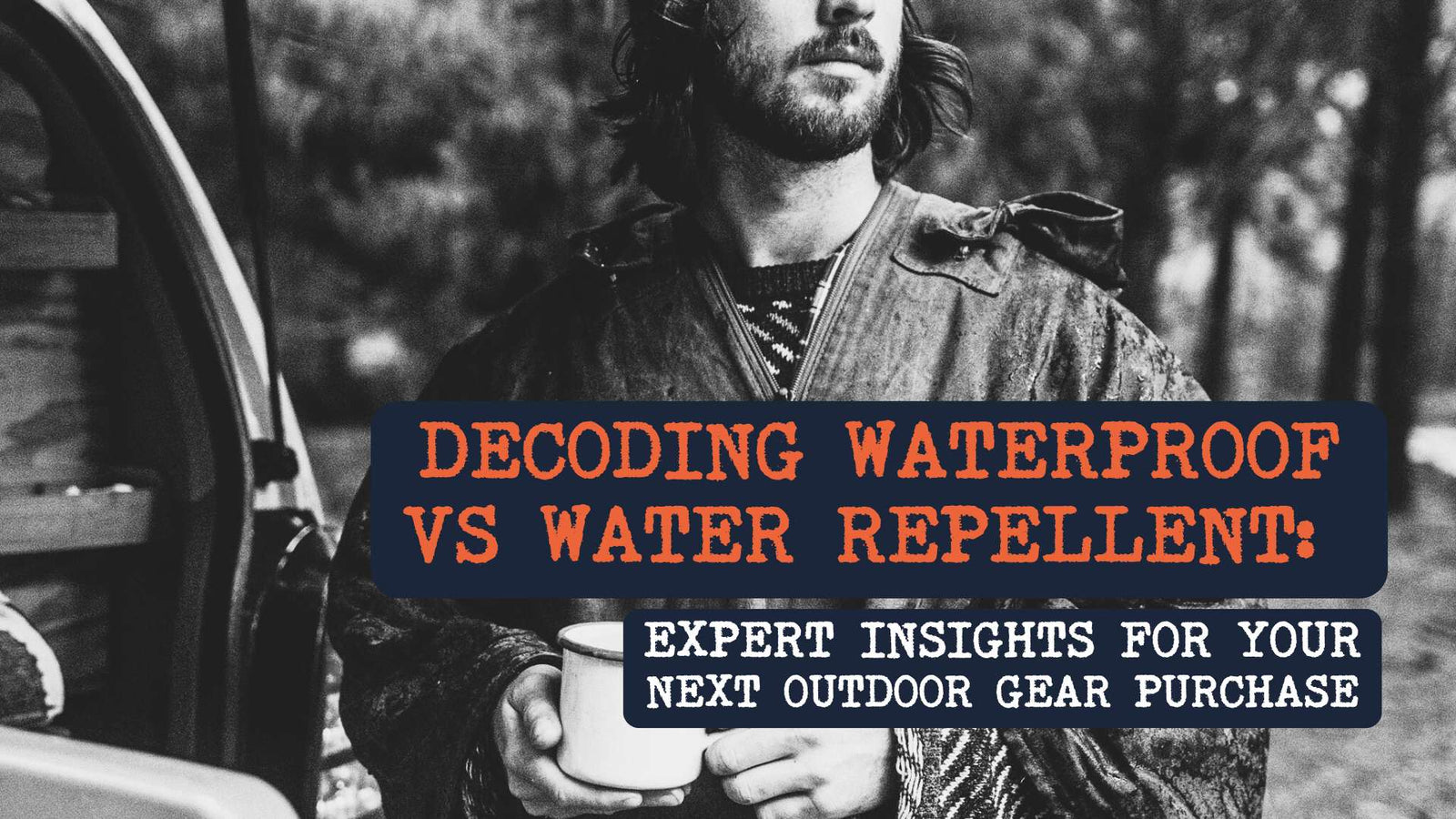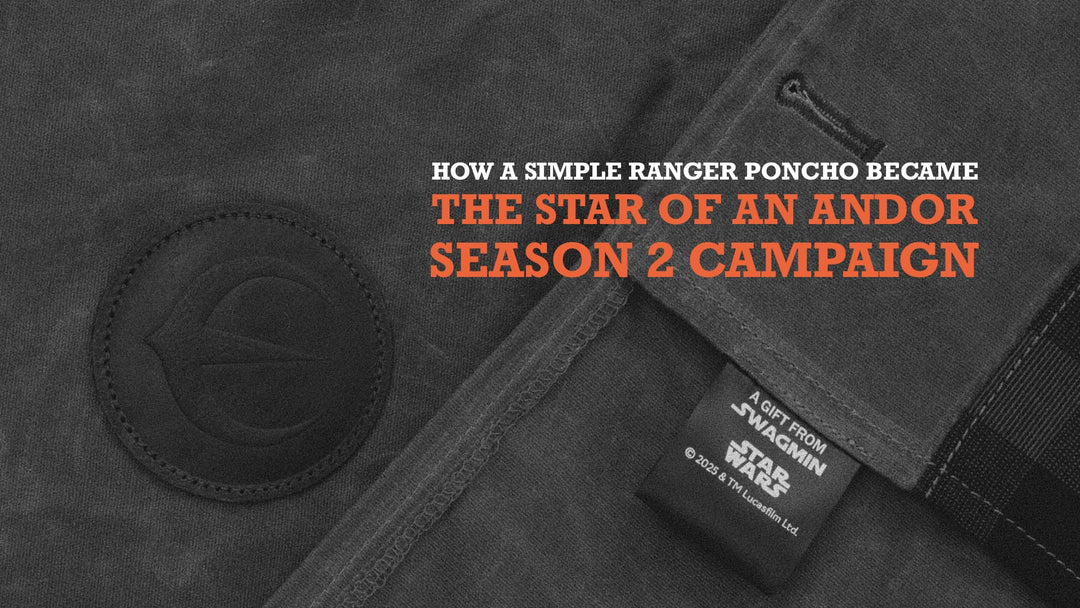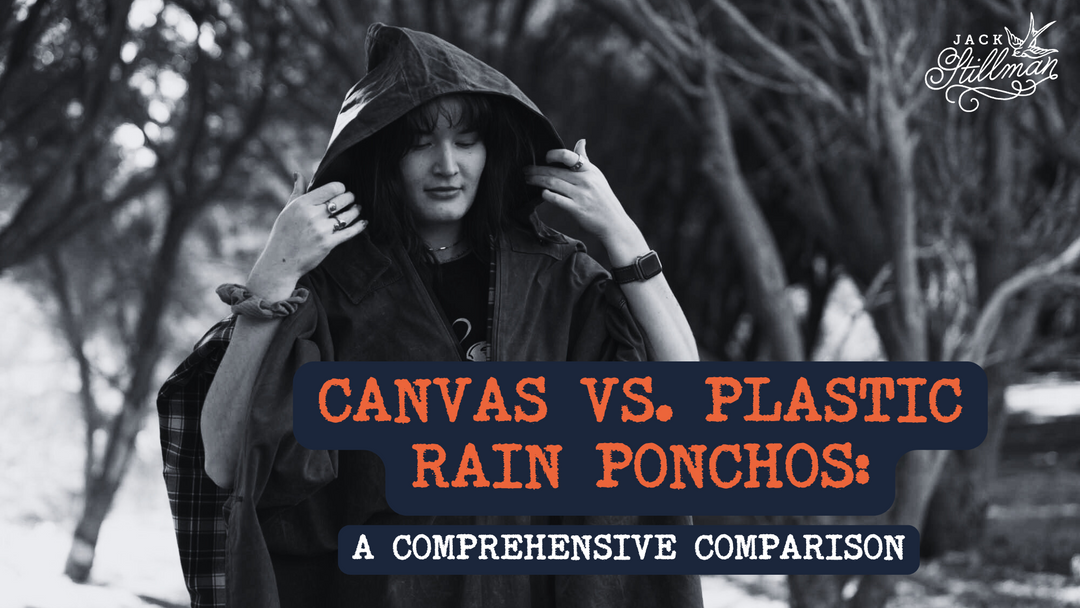Decoding Waterproof vs Water Repellent: Expert Insights for Your Next Outdoor Gear Purchase

When it comes to keeping your belongings dry, understanding the difference between waterproof and water-repellent materials is not a given. As someone deeply immersed in the world of traditional, heritage bag design and manufacturing, I've seen firsthand how these terms can be confusing. Water proof materials provide total protection against water, ensuring not a drop gets through. On the other hand, water-repellent fabrics resist water to a degree but may not pass the test of waterproofness.
Through my journey in crafting durable, functional canvas bags for the Australian and international markets, I've learned the importance of choosing the right material for the right situation. In Australia, where weather conditions can change rapidly, this knowledge becomes even more crucial. It's not just about keeping the rain out; it's about understanding how your choices will affect your comfort, the environment and your wallet. Let's delve into the nuances and help you make informed decisions for your next adventure.
What Does Waterproof Mean
Waterproof materials use an impermeable membrane, meaning they prevent water from ever penetrating the fabric. That means your polyester weekender bag or rainproof polyester poncho keeps your gear and yourself completely dry - or so you would be led to believe. Most waterproof materials rely on synthetic fibers such as polyester and nylon with chemical treatments using substances like PVC and PU to achieve their impermeability.
Waterproof Testing?
The waterproof properties of fabric is tested and rated using the Hydrostatic Head Testing. This is used particularly in outdoor gear like tents, raincoats, and backpacks. The test determines the height of a water column that a fabric can withstand before water begins to seep through.
How Hydrostatic Head Testing Works
The test involves placing a sample of fabric under a column of water and gradually increasing the pressure until water begins to penetrate the material. The height of this water column at the point of penetration is measured in millimetres, giving the hydrostatic head rating.
Flaws in Hydrostatic Head Testing
While hydrostatic head testing is widely used, it has several limitations that make it a potentially flawed measure of a fabric's real-world performance:
Ideal Conditions: The testing is conducted under ideal laboratory conditions using new, pristine materials. This doesn't account for how the fabric might perform after being subjected to normal wear and tear, such as creasing, folding, or stretching.
Single-Point Measurement: The test only reveals the pressure threshold at which water begins to seep through. It doesn't consider the volume of water that passes through after this point or how the material's performance might degrade over time.
Limited Durability Information: Hydrostatic head testing offers no real indication of the material's durability or how it will perform over extended use.
Lack of Real-World Simulation: The test doesn't account for factors like wind-driven rain or the pressure exerted by a person sitting on a tent floor, which can significantly affect a fabric's waterproofness in practical use.
Potential for Degradation: Some materials, like certain lightweight fabrics used in ultralight gear, may perform well when new but can develop pinholes or weak spots at creases after use, compromising their waterproofness.
What Does Water Repellent Mean
Water repellent refers to fabrics that resist water penetration to some extent, but are not completely impermeable. Unlike waterproof materials which block water entirely, water repellent materials provide partial protection against moisture using a very different, natural process. This characteristic is often seen in items like canvas bags and accessories like backpacks, cross body bags, tarpaulins etc.
How Does Beeswax Repel Water?
Beeswax creates an effective water-repellent layer on fabric by forming a protective coating on the surface. Beeswax is hydrophobic, meaning it repels water, causing the molecules to group together and fall off verticles services. A layer of wax also reduces the gaps between fabric fibers, making it difficult for these large water groups to penetrate. When applied to materials like cotton canvas, it adheres well, forming a water-repellent barrier that also allows for some breathability.
The natural properties of beeswax make it a superior choice for waterproofing natural fibers like canvas. Unlike artificial fibers such as polyester and nylon, which require chemical treatments like PVC or PU to achieve impermeability, beeswax offers a more eco-friendly solution along with additional benefits.
Additional Benefits of Beeswax
Durability and Longevity
The waterproofing effect of beeswax is long-lasting and durable. It can withstand regular use and exposure to various environmental conditions. This durability ensures that the fabric remains protected for an extended period.
Easily Reapplied
Unlike a toxic respray of PVC or PU chemicals on your well used backpack, fabric wax is easily reapplied as often as necessary.
Protection Against Stains:
The beeswax coating not only repels water but also protects against other liquid stains, making the fabric easier to clean and maintain.
Natural Antimicrobial Properties:
Beeswax possesses antimicrobial and antifungal properties, which can help keep the fabric clean and prevent the growth of mold and mildew.
Environmentally Friendly:
Unlike synthetic waterproofing agents, beeswax is a natural, biodegradable substance. At the end of its life, beeswax-treated fabric can be composted, reducing environmental impact.
Conditioning Effect:
For materials like leather, beeswax not only waterproofs but also conditions the material, helping to maintain its suppleness and extend its lifespan.
Versatility:
Beeswax can be used to waterproof a wide range of fabrics and materials, from canvas and cotton to leather and wood.
When to choose waterproof over water repellent
Understanding when to opt for water-repellent materials rather than waterproof ones is comes up a lot with our Australian customers - a confusion created by outdoor companies selling unnecessarily over spec'd products to consumers who possibly don't need that level of protection.
Waterproof materials provide a complete barrier against water penetration through an impermeable membrane. But that means no moisture gets in and none gets out. It also mean that no air gets in and none gets out. In the terms of rain gear, that's great if you are in cold and wet climates where appropriate layering can be achieved to moderate body temperature and sweating. It's also good for professional gear bags that need to protect clothing and equipment from extremely wet environments.
So what are the tradeoffs to waterproofness? Breathability and plastic.
Breathability is the ability of fabrics to allow for a two way flow of air. In the case of a canvas backpack, it's the ability of the fabric to allow odours and internal moisture to escape the inside of the bag. In the case of a rain jacket, it's the ability of the fabric to allow sweat and humidity from the body to escape instead of creating a swampy uncomfortable mess.
Waterproof fabrics are also made of plastic coated in more plastic. I'm not going to rail against the artificial fibre industry because I don't think it's such a simple argument. There is a place for synthetic fibres but we need to moderate our choices in my opinion. I am a champion for sustainable fabrics and ones that don't leave a forever footprint on the planet. For now, polyester and nylon, as the two most produced and used synthetic fibres in the world, are dominating the outdoor and luggage markets because they are cheap and accessible - not necessarily because they are the best choice for all consumers.
In contrast to the above, water-repellent fabrics, such as wax-treated cotton, while not passing the waterproof test, offer some real advantages over synthetic fibres.
Considering the purpose of your gear is important. For example, a canvas duffel bag or day trek rucksack might only need water repellent qualities for light rain or accidental splashes, preserving breathability and reducing environmental impact. Do you really need that Mt Everest rated laptop bag? Is a waxed canvas rain poncho enough to keep you dry on your weekend camping trip or should you invest in a Gortex Arctic grade anorak? The answer is, probably not.
I can tell you from my own experience that a well made beeswaxed canvas backpack will keep your gear dry in a tropical monsoon. I've climbed mountains with mine, ridden through driving rain, negotiated torrential downpours around the world. I found I didn't need waterproof plastic to protect me and my gear and chances are, neither do you.
Key Takeaways
- Distinction Between Terms: Understanding the difference between waterproof and water-repellent materials is important for selecting appropriate gear. Waterproof offers total protection from water, while water-repellent materials provide partial resistance and breathability.
- Material Considerations: Water-repellent materials like polyester and nylon require chemical treatments to achieve impermeability, whereas natural fibers like cotton offer eco-friendly alternatives when treated with beeswax.
- Environmental Impact: Using beeswax as a waterproofing agent enhances fabric resistance sustainably, avoiding the environmental concerns associated with synthetic treatments like PVC and PU.
- Functionality vs. Eco-sustainability: The choice between waterproof and water-repellent materials impacts both the functionality of the gear in variable weather and its environmental footprint, making it essential to weigh outdoor needs against sustainability preferences.
- Practical Applications: For gear such as canvas backpacks and travel bags, beeswax-treated cotton provides a balance of durability, water resistance, and breathability, suitable for eco-conscious travelers.
Jack Stillman Fabric Wax
Jack Stillman Fabric Wax is our blend of beeswax and natural oils that can be used to treat all natural fibres as well as nylon. Applying Jack Stillman Fabric Wax is a straightforward process that enhances your bag's water resistance while maintaining breathability. First, ensure the fabric is clean and dry. Rub the wax bar evenly over the surface, applying more pressure for thicker coverage. Use a hairdryer or heat gun to melt the wax into the fibers, ensuring even distribution. It's essential to focus on seams and areas prone to water exposure. Allow the fabric to cool and set the wax. This method not only boosts water resistance but also extends the life of your bag, making it perfect for eco-conscious travelers who value sustainability and durability. By choosing natural treatments over chemical ones, you're making a responsible choice for both your gear and the environment.






